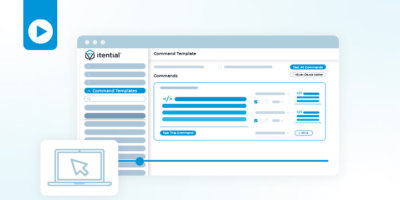Creating Flexible Network Automations Leveraging Itential’s Data Parsing & Templating Features
Creating programming logic to work with the tremendous amount of data that must be parsed and generated as part of an automation workflow has become one of the biggest challenges network practitioners face. As the number of systems involved is only increasing in today’s hybrid, multi-domain networks, stare-and-compare or copy-paste techniques are no longer feasible options to generate new configurations from a set of data.
Instead of building these functions from scratch and maintaining them manually over time, network automation engineers can utilize the Itential Automation Platform’s template features that leverage TextFSM and Jinja2 to visually create automation tasks that can parse data from device output and generate new data from templates. This provides you the ability to quickly create reusable tasks that can be used to build pre- and post-check processes, create multiple device configurations, or generate formatted output for use in other systems.
In this demo, Rich Martin, Director of Technical Marketing at Itential, shows step-by-step how to:
- Create, build, and test TextFSM templates.
- Create, build, and test Jinja2 templates.
- Build pre-check and post-check processes with templates.
- Generate formatted output with data and templates in a workflow.
